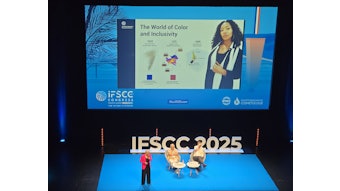“Let me give you one definition of ethics: It is good to maintain life and to further life; it is bad to damage and destroy life.” —Albert Schweitzer
To test or not to test, that is the question. More precisely: to test on animals or not to test on animals—THAT is the question. Some requirements absolutely demand animal testing, while others absolutely ban it. Hamlet had it easy merely having to deal with evaluating information from the ghost of his father. The toxicologist is a modern Hamlet, finding truth and correct action to be an elusive and ever-shifting goal.
Everyone agrees on one point: safe is good. But “the devil is in the details,” and how safety is achieved is subject to passionate debate. Testing on humans is not usually an option, yet before people are exposed to a product, its safety must be established. Traditional methods involve animals, often many animals, and are often cruel, expensive and time-consuming. The “New Toxicology” seeks creative methods to arrive at valid results as humanely as possible.1 A few cute mice and bunnies will meet a bad end, but the full resources of biology and mathematical modeling are being used to create alternatives acceptable to regulatory agencies and consumers.
Any worthwhile subject is awash with acronyms. Some groups that the toxicologist must deal with are OECD (Organization for Economic Cooperation and Development), ECVAM (European Center for the Validation of Alternative Methods) and ICCVAM (Interagency Coordinating Committee on the Validation of Alternative Methods). Responsibility for testing fragrance materials lies with RIFM (Research Institute for Fragrance Materials), which, in turn, reports to IFRA, (The International Fragrance Association).
Altweb,2 the Alternatives to Animal Testing Web site, gives a surprisingly rounded view of the field, promoting new methods without condemning the progress that has been achieved using animals. The resources on the site and the links provided are a great starting point for anyone seeking a fuller understanding of the subject.
The New Toxicology can be viewed through the alternatives categorized in 1959 as the three Rs: reduction, refinement and replacement. While reality is a little more complicated than the three Rs, they remain a handy guide to the field.
Reduction aims to design experiments using the least number of animals. The standard acute toxicity test is the LD50, the amount of material needed to kill half the test animals.3 Older methods used up to 140 animals, which dropped to 45 by statistical methods used since 1989. The OECD now accepts a method using 16 animals, and a new study opens the possibility of reducing the number to six.
While traditional methods involved killing an animal at each stage of the test, refinement includes noninvasive imaging techniques such as x-rays, PET scans and MRI, which allows the course of an experiment to be followed in a single animal.
Another refinement is to substitute species lower on the evolutionary scale, such as zebra fish. A chip can be made of the 9,000 genes of the zebra fish and washed with test chemicals, showing which genes the chemical activates.
Replacement requires completely eliminating animals from the testing protocol. The Draize test is a prime target for this advance. First, rabbit eyes were replaced by eyeballs from slaughterhouses. Then a membrane from a hen’s egg was used. Now tissue cultures have been created. Of course, the alternatives must yield results comparable to the standard tests. This proved difficult with the Draize test, not because the alternatives were bad, but because the Draize test itself yields many false positives.
Fragrance-free is a rallying cry for many products. Fragrance often is considered a problem for safety, and the heart of the problem is size. For an aroma chemical to have odor, it must be small and volatile, with a molecular weight rarely above 300. Small molecules penetrate the skin easily, and thus fragrances have a tendency to cause irritation. Aroma chemicals have been extensively studied on skin for 30 years, and safety guidelines have been issued on many materials by IFRA.
It may seem peculiar, but until recently, no thought was given to the respiratory effects of fragrance. It was felt that respiration was transitory and involved few molecules, while fragrance applied to the skin had a longer and more intimate exposure profile. Suddenly, in the 1990s fragrances were significantly in the air, with candles and plug-ins and aerosols permeating every nook and cranny. Clearly, respiratory studies were needed, but how does one come to grips with testing 3,000 chemicals?
The modern approach is not to attempt to study every material, since neither the time nor the money is available. Smarter methods are needed. So instead of thousands of chemicals, nine were chosen.4
The selection was based on a chemical’s importance in fragranced products, physicochemical properties and known irritation or sensitization potential. The paper that resulted from the respiratory studies, published in 2005, laid the foundation for an entirely new approach to fragrance safety.
How does one test a fragrance for respiratory safety? It is not remotely obvious what delivery systems would be employed or what a reasonable set of exposure conditions might be. RIFM constructed a prototype residential bathroom (a 2.44 m cube) with standardized air circulation. A five second aerosol spray was analyzed at two heights to simulate exposure for an adult and a child. The evaluation of airborne chemistry revealed that concentration was proportional to the chemical’s volatility.
The RIFM study did not evaluate human response to fragrance in the air, only the distribution of chemicals in the air following typical use. It is only the first step in a long process to model the respiratory consequences of fragrance. Intelligent experimental design and use of chemical models should produce valuable insight with limited hard data as this initiative proceeds. The National Institute for Occupational Safety and Health has taken the list of chemicals used by RIFM in its test aerosol and exposed some of these chemicals to reactive species commonly present in indoor air.5 The hydroxy radical, ozone and nitrate radical were used. Starting with safe chemicals, the reactant products can be offensive or harmful. The study looked at both gas-phase and surface-phase reactions.
The science of safety and ethical considerations are moving forward to provide a healthy environment—using as many scientific and mathematical tools as possible. It is essential to embrace the process as a necessity for the world and a gift to future generations.
References
- AM Goldberg and T Hartung, Protecting More than Animals, Sci Amer, 294 (1) (2006)
- https://caat.jhsph.edu/
- S Herman, Safety First, GCI (Feb 2002)
- D Isola et al., Simulated Inhalation Levels of Fragrance Materials in a Surrogate Air Freshener Formulation, Environ Sci Technol 39, 7810–7816 (2005)
- R Wells, Chemistry of Indoor Environments: Results and Future, presentation at RIFM (April 12, 2006)










